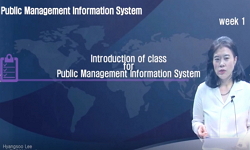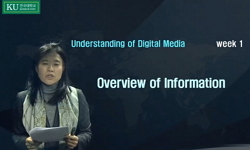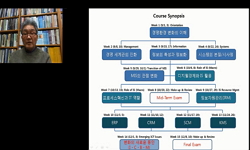The majority of research on institutional theory suggests that the new institutional practices presented by national governments and expert groups is a legitimate demand by society, and that the organization is a passive actor that accepts it. However...
http://chineseinput.net/에서 pinyin(병음)방식으로 중국어를 변환할 수 있습니다.
변환된 중국어를 복사하여 사용하시면 됩니다.
- 中文 을 입력하시려면 zhongwen을 입력하시고 space를누르시면됩니다.
- 北京 을 입력하시려면 beijing을 입력하시고 space를 누르시면 됩니다.

최고 경영자의 인구통계학적 특성이 조직 디커플링 행위에 미치는 영향 = Effects of CEO’s Demographic Characteristics on Decoupling
한글로보기https://www.riss.kr/link?id=A106637372
- 저자
- 발행기관
- 학술지명
- 권호사항
-
발행연도
2020
-
작성언어
-
- 주제어
-
등재정보
KCI등재
-
자료형태
학술저널
-
수록면
79-98(20쪽)
-
KCI 피인용횟수
0
- DOI식별코드
- 제공처
-
0
상세조회 -
0
다운로드
부가정보
다국어 초록 (Multilingual Abstract)
The majority of research on institutional theory suggests that the new institutional practices presented by national governments and expert groups is a legitimate demand by society, and that the organization is a passive actor that accepts it. However, individual organizations often perform so-called decoupling acts that run their organizations in their own way instead of following the way the system requires, despite the pressures of a strong institutional environment. In this study, the decoupling behavior of these organizations can be varied by the characteristics of the highest decision maker in the organization based on the upper-echelon theory(UET) even if there is no difference in pressure experienced by individual organizations, and their relationship is empirically analyzed among secondary educational institutions that are relatively strongly regulated by the government. According to the analysis of 192 high schools in Korea, the female principal, the younger the principal, and the higher the educational background, the more likely they are to engage in decoupling behavior that are different from the intent and content of government policies. Therefore, from the results of this study, meaningful theoretical and practical implications can be provided for researchers and managers in the field of knowledge management research.
참고문헌 (Reference)
1 MBC, "흐지부지 끝난 ‘임실 성적조작’ 파문"
2 박수정, "학교장의 특성 및 학교경영 활동이 일반계 고등학생의 학업성취도에 미치는 영향" 한국교육평가학회 27 (27): 1127-1155, 2014
3 박상완, "학교장의 지도성에 관한 국내 연구동향 분석(1998-2008)" 21 (21): 129-157, 2008
4 최윤정, "학교장의 경영가치 유형에 따른 학교장 지도성 및 학교 문제행동과 학교 효과성과의 관계: 예방상담학적 관점" 한국상담학회 13 (13): 1315-1336, 2012
5 한유경, "학교장 성별에 따른 중학교 학생의 학업성취도 차이 분석" 한국교육행정학회 29 (29): 329-350, 2011
6 김경회, "학교자율화에 대한 교육감과 학교장의 인식 분석" 한국지방행정연구원 26 (26): 249-270, 2012
7 조항로, "학교자율경영제 관점에서 본 자율형 사립고 운영과정에서의동형화와 디커플링 현상 분석: A 자율형 사립고 사례" 한국교육행정학회 31 (31): 227-258, 2013
8 김재웅, "학교운영 자율성 및 다양성 제고를위한 이론적 탐색" (11) : 21-47, 2006
9 채희원, "최고경영진의 인구통계학적 특성이 하이테크 기업의 기술적 혁신에 미치는 영향" 한국전략경영학회 12 (12): 83-104, 2009
10 선우희연, "최고경영자 연령과 조세회피수준의 관계" 한국회계정보학회 35 (35): 213-241, 2017
1 MBC, "흐지부지 끝난 ‘임실 성적조작’ 파문"
2 박수정, "학교장의 특성 및 학교경영 활동이 일반계 고등학생의 학업성취도에 미치는 영향" 한국교육평가학회 27 (27): 1127-1155, 2014
3 박상완, "학교장의 지도성에 관한 국내 연구동향 분석(1998-2008)" 21 (21): 129-157, 2008
4 최윤정, "학교장의 경영가치 유형에 따른 학교장 지도성 및 학교 문제행동과 학교 효과성과의 관계: 예방상담학적 관점" 한국상담학회 13 (13): 1315-1336, 2012
5 한유경, "학교장 성별에 따른 중학교 학생의 학업성취도 차이 분석" 한국교육행정학회 29 (29): 329-350, 2011
6 김경회, "학교자율화에 대한 교육감과 학교장의 인식 분석" 한국지방행정연구원 26 (26): 249-270, 2012
7 조항로, "학교자율경영제 관점에서 본 자율형 사립고 운영과정에서의동형화와 디커플링 현상 분석: A 자율형 사립고 사례" 한국교육행정학회 31 (31): 227-258, 2013
8 김재웅, "학교운영 자율성 및 다양성 제고를위한 이론적 탐색" (11) : 21-47, 2006
9 채희원, "최고경영진의 인구통계학적 특성이 하이테크 기업의 기술적 혁신에 미치는 영향" 한국전략경영학회 12 (12): 83-104, 2009
10 선우희연, "최고경영자 연령과 조세회피수준의 관계" 한국회계정보학회 35 (35): 213-241, 2017
11 박상찬, "지식창출과 활용의 괴리: 녹색기술인증의 제도론적 분석" 한국지식경영학회 18 (18): 117-138, 2017
12 박노윤, "지식경영일반: 조직의 결합능력과사회적 자본" (12) : 271-303, 2004
13 이경묵, "제도론: 주요 이슈와 미래의 연구방향" 서울대학교경영대학 (33) : 382-409, 1999
14 노태희, "제6차 고등학교 과학 교육과정과 실천에 대한 과학 교사의 인식 조사" 20 (20): 20-28, 2000
15 박철순, "전략결정요인으로서의 최고경영자: Upper Echelons 이론 및 자유 재량이론의 통합모형" 2 (2): 147-168, 1999
16 홍창남, "자율형 공립고등학교 운영 실태 및 개선방안 탐색" 한국교육행정학회 29 (29): 225-251, 2011
17 최만기, "자원기반이론과 제도화이론에 기초한 연구개발집단의 지식경영 연구모형" 4 (4): 35-53, 2003
18 김이경, "우수 학교장의 리더십 특성에 관한 질적 사례 연구" 한국교육행정학회 26 (26): 325-350, 2008
19 이경묵, "우리나라 제도이론 연구에 대한 비판적 고찰과 미래 연구 방향" 한국경영학회 48 (48): 1-32, 2019
20 박상완, "우리나라 여교장의 특성 분석" 한국교육행정학회 35 (35): 233-261, 2017
21 최영준, "여성성이 은행혁신성에 미치는 영향: 고객관리와 조직학습을 중심으로" 한국인적자원관리학회 24 (24): 77-95, 2017
22 최미섭, "여성 학교장의 리더십 유형 및 특성 분석" 한국교원교육학회 34 (34): 111-137, 2017
23 민무숙, "여교장의 지도성 효과 및특성에 관한 연구" 220 (220): 1-51, 2000
24 김동수, "신제도주의 조직이론의 과제와 전망: 제도적 디커플링(Institutional Decoupling) 연구를 중심으로" 한국인사조직학회 25 (25): 121-150, 2017
25 조대연, "비영리조직의 지식경영 현황 및 비영리조직간 지식경영 핵심성공요인" 한국지식경영학회 9 (9): 35-61, 2008
26 MBC, "대전전교조 “중학교 절반 이상 0교시 수업"
27 이준영, "남성과 여성의 투자위험 감수성향 차이에 관한 연구" 대한가정학회 49 (49): 1-13, 2011
28 조혜진, "기업의 해외시장 집중화가 애널리스트 성과예측정보에 미치는 영향: 최고경영자 특성의 조절효과" 한국지식경영학회 20 (20): 195-213, 2019
29 이기종, "국가수준 학업성취도 평가체제의쟁점과 대안" 29 (29): 21-33, 2009
30 KBS, "교육청, ‘일부 학생 배제’ 조직적 지시"
31 민용성, "교과 교육내용의 적합성 준거 개발" 학습자중심교과교육학회 11 (11): 19-41, 2011
32 김성열, "고등학교 체제의 다양화:양상과 성과, 그리고 과제" (81) : 27-56, 2015
33 임준희, "고교 평준화 정책과 교육이해관계자들의 정책연합" 한국교육행정학회 24 (24): 123-146, 2006
34 Shakeshaft, C, "Women in educational administration" Sage Publications, Corwin Press 2455-, 1989
35 Hambrick, D. C, "Upper echelons: The organization as a reflection of its top managers" 9 (9): 193-206, 1984
36 Grant, R. M, "Toward a knowledge-based theory of the firm" 17 (17): 109-122, 1996
37 Bantel, K. A, "Top management and innovations in banking: does the composition of the top team make a difference" 10 (10): 107-124, 1989
38 Wiersema, M. F, "Top Management Team Demography and Corporate Strategic Change" 35 (35): 91-121, 1992
39 Hambrick, D. C, "Top Executive commitment to the status quo: some tests of its determinants" 14 (14): 401-418, 1993
40 Deephouse, D. L, "To be different, or to b e t he same? It’s a question (and t heory) of strategic balance" 20 (20): 147-166, 1999
41 Fiss, P. C, "The symbolic management of strategic change: Sensegiving via framing and decoupling" 49 (49): 1173-1193, 2006
42 Mizruchi, M. S, "The social construction of organizational knowledge: a study of the uses of coercive, mimetic, and normative isomorphism" 44 (44): 653-683, 1999
43 Hillman, A. J., "The resource dependence role of corporate directors: Strategic adaptation of board composition in response to environmental change" 37 (37): 235-256, 2000
44 Kohlberg, L, "The philosophy of moral development: Moral stages and the idea of justice (Essays on moral development, Vol. 1)" Haiper & Row 1981
45 Collins, O, "The organization makers" Appleton- Century-Croft 1970
46 Dacin, M. T, "The legitimacy of strategic alliances: An institutional perspective" 28 (28): 169-187, 2007
47 Geletkanycz, M. A, "The external ties of top executives: I mpl icat ions for st rateg ic choice a nd performance" 42 (42): 654-681, 1997
48 Pfeffer, J, "The external control of organizations" Harper & Row 1978
49 Chown, S. M, "The Wesley rigidity inventory: A factor-analytic approach" (61) : 491-494, 1960
50 Berger, P. L, "The Social Construction of Reality: A Treatise in the Sociology of Knowledge , Garden City" Anchor Books 1966
51 Meyer, J. W, "The Sage handbook of organizational institutionalism" 790-811, 2008
52 Boxenbaum, E, "The Sage handbook of organizationa linstitutionalism , 2" 79-104, 2017
53 Hannan, M. T, "The Population Ecolog y of Organizations" 82 (82): 929-964, 1977
54 DiMaggio, P. J, "The Iron Cage Revisited: Institutional Isomorphism and Collective Rationality in Organizational Fields" 48 (48): 147-160, 1983
55 Ireland, R. D, "Strategy formulation processes: Differences in perceptions of strength and weaknesses indicators and environmental uncertainty by managerial level" 8 (8): 469-485, 1987
56 Hitt, M. A, "Strategic decision models: Integrating dif ferent perspectives" 12 (12): 327-351, 1991
57 Boeker, W, "Strategic change: The inf luence of managerial characteristics and organizational growth" 40 (40): 152-170, 1997
58 Oliver, C, "Strategic Response to Institution Processes" 16 (16): 145-179, 1991
59 Kanter, R. M, "Some Effects of Proportions in Group Life: Skewed Sex Pations and Presponses to Token Women" (82) : 965-990, 1977
60 Dearborn, D. C, "Selective perceptions: A note on t he departmental identification of executives" (21) : 140-144, 1958
61 Westpha l, J. D, "SUBSTANCE AND SYMBOLISM IN CEOS’ LONG-T ERM INCENTIVEPLANS" Academy of Management 1993 (1993): 232-236, 1993
62 Lampe, A, "Review of the Book Gender in the Workplace: A Case Study Approach" 8 (8): 346-351, 2001
63 Alutto, J. A, "Research on commitment to employing organizations: Preliminary findings on a study of managers graduating from engineering and MBA programs" 1975
64 Vroom, V. H, "Relationship between age and risk taking among managers" 55 (55): 399-, 1971
65 Helen, M. M, "Principal L eadersh ip a nd S cho ol Per forma nce: An Integration of Transformational and Instructional Leadership" 39 (39): 370-397, 2003
66 Scott, W. R, "Organizations: R at iona l, Natural, and Open Systems" Prentice Hall 1981
67 Rowan, B, "Organizational structure and the institutional environment: The case of public schools" 37 (37): 259-279, 1982
68 Miles, R. E, "Organizational strategy, structure, and process" 3 (3): 546-562, 1978
69 Carroll, G. R, "Organizational mortality in the newspaper industries of Argentina and Ireland: An ecological approach" 27 (27): 169-198, 1982
70 Kimberly, J. R, "Organizational innovation: The influence of individual, organizational and contextual factors on hospital adoption of technological and administrative innovations" (24) : 689-713, 1981
71 Meyer, J. W, "Organizational environments: Ritual and rationality" 199-215, 1983
72 Zhao, E. Y, "Optimal distinctiveness: Broadening the interface between institutional theory and strategic management" 38 (38): 93-113, 2017
73 Hitt, M. A, "Managerial selection decision models: Examination of configural cue processing" 74 (74): 1-53, 1989
74 Hambrick, D. C, "Managerial discretion: A bridge between polar views of organizational outcomes" (9) : 369-406, 1987
75 Child, J, "Managerial and organizational factors associated with company performance part I" 11 (11): 175-189, 1974
76 Hart, P, "Management youth and company growth: A correlation" 4 (4): 50-53, 1970
77 Kaplan, S. N, "Leveraged buyouts and private equity" 23 (23): 121-146, 2009
78 Meyer, J. W, "Institutionalized Organizations: Formal Structure as Myth and Ceremony" 83 (83): 340-363, 1977
79 Zucker, L. G, "Institutional theories of organization" 13 (13): 443-464, 1987
80 Judge, W. Q, "Institutional and Strategic Choice Perspectives on board involvement in the strategic decision process" 35 (35): 766-794, 1992
81 Gilligan, C, "In a different voice" Harvard University Press 1982
82 Prendergast, C, "Impetuous youngsters and jaded old-timers: Acquiring a reputation for learning" 104 (104): 1105-1134, 1996
83 Wahlstrom, K. L, "How teachers experience principal leadership: The roles of professional community, trust, efficacy, and shared responsibility" 44 (44): 458-495, 2008
84 Douglas, M, "How institutions think" Syracuse University Press 1986
85 Ragins, B. R, "Gender gap in the executive suite: CEOs and female executives report on breakin the glass ceiling" 12 (12): 28-42, 1998
86 Crilly, D, "Faking it or muddling through? Understanding decoupling in response to stakeholder pressures" 55 (55): 1429-1448, 2012
87 Dollinger, M. J, "Environmental boundary spanning and information processing effects on organizational performance" (27) : 351-368, 1984
88 Deephouse, D. L, "Does Isomorphism Legitimate" 39 (39): 1024-1039, 1996
89 Westphal, J. D, "Decoupling Policy from Practice: The Case of Stock Repurchase Programs" 46 (46): 202-228, 2001
90 Rogers, E. M, "Communication of Innovations" Free Press 1971
91 Verbruggen, S, "Can resource dependence and coercive isomorphism explain nonprofit organizations’ compliance with reporting standards" 40 (40): 5-32, 2011
92 하영범, "CEO 특성이 R&D투자정도에 미치는 영향" 한국국제회계학회 (58) : 103-125, 2014
93 Barker III, V. L, "CEO characteristics and firm R&D spending" 48 (48): 782-801, 2002
94 Serf ling, M. A, "CEO age and the riskiness of corporate policies" (25) : 251-273, 2014
95 Steven, J. M, "Assessing personal, role, and organizational predictors of managerial commitment" 21 (21): 380-396, 1978
96 Hornik, J, "Allocation of time to the mass media" 7 (7): 343-355, 1981
97 Carlsson, G, "Age, Cohorts and the Generation of Generations" 35 (35): 710-718, 1970
98 Taylor, R, "Age and experience as determinants of managerial information processing and decision-making performance" 18 (18): 74-81, 1975
99 인천시교육청, "2014년 국가수준 학업성취도평가 시행 관련 특정감사결과"
동일학술지(권/호) 다른 논문
-
- 한국지식경영학회
- 이종선 ( Jong-seon Lee )
- 2020
- KCI등재
-
다중반응표면 최적화를 위한 단변량 손실함수법: 대화식 절차 기반의 가중치 결정
- 한국지식경영학회
- 정인준 ( In-jun Jeong )
- 2020
- KCI등재
-
4차산업혁명 핵심기술 도입 및 정보보호조직에 관한 탐색적 연구: 성과측면에서의 비교분석
- 한국지식경영학회
- 김기현 ( Kihyun Kim )
- 2020
- KCI등재
-
- 한국지식경영학회
- 정이철 ( Yee Chul Chung )
- 2020
- KCI등재
분석정보
인용정보 인용지수 설명보기
학술지 이력
| 연월일 | 이력구분 | 이력상세 | 등재구분 |
|---|---|---|---|
| 2026 | 평가예정 | 재인증평가 신청대상 (재인증) | |
| 2020-01-01 | 평가 | 등재학술지 유지 (재인증) |  |
| 2017-01-01 | 평가 | 등재학술지 유지 (계속평가) |  |
| 2016-10-04 | 학술지명변경 | 외국어명 : The Knowledge Management Society of Korea -> Knowledge Management Review |  |
| 2014-10-10 | 학회명변경 | 영문명 : 미등록 -> The Knowledge Management Society of Korea |  |
| 2013-01-01 | 평가 | 등재 1차 FAIL (등재유지) |  |
| 2010-01-01 | 평가 | 등재학술지 유지 (등재유지) |  |
| 2007-01-01 | 평가 | 등재학술지 선정 (등재후보2차) |  |
| 2006-01-01 | 평가 | 등재후보 1차 PASS (등재후보1차) |  |
| 2005-03-21 | 학술지등록 | 한글명 : 지식경영연구외국어명 : The Knowledge Management Society of Korea |  |
| 2004-01-01 | 평가 | 등재후보학술지 선정 (신규평가) |  |
학술지 인용정보
| 기준연도 | WOS-KCI 통합IF(2년) | KCIF(2년) | KCIF(3년) |
|---|---|---|---|
| 2016 | 1.47 | 1.47 | 1.48 |
| KCIF(4년) | KCIF(5년) | 중심성지수(3년) | 즉시성지수 |
| 1.4 | 1.28 | 2.047 | 0.3 |





 ScienceON
ScienceON KISS
KISS






